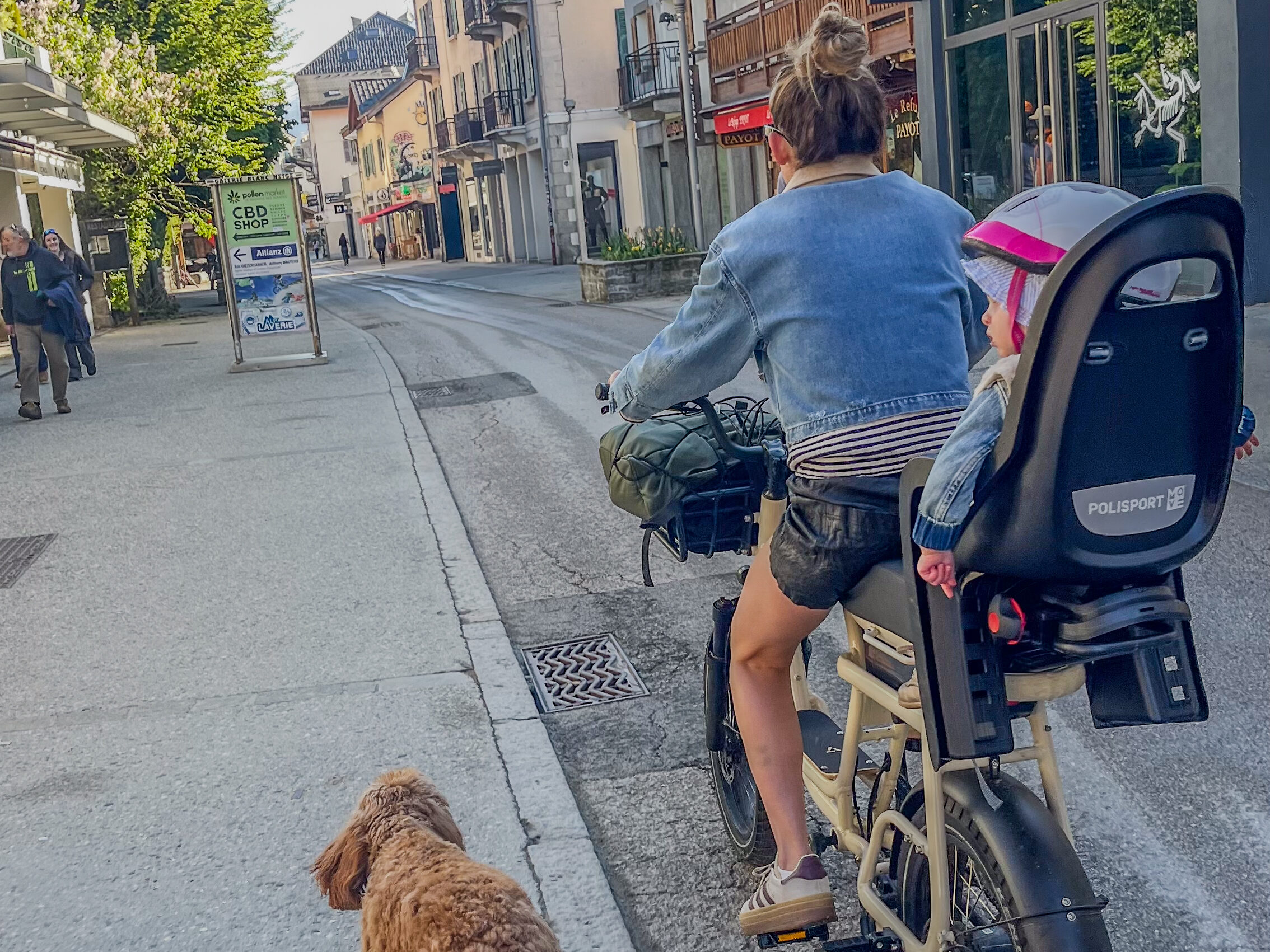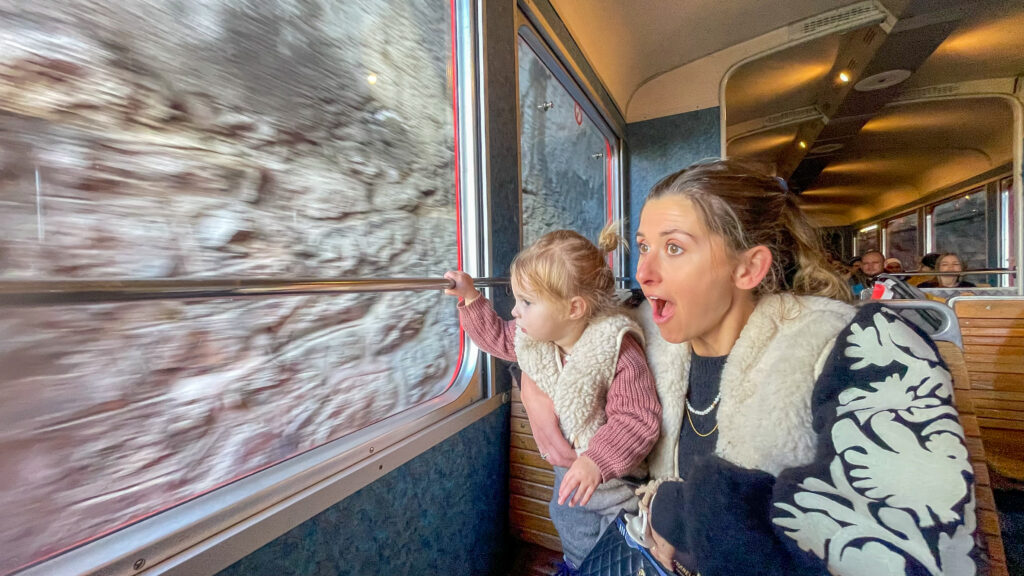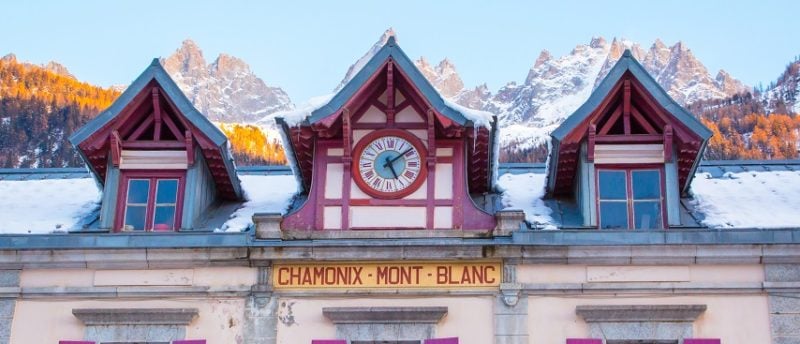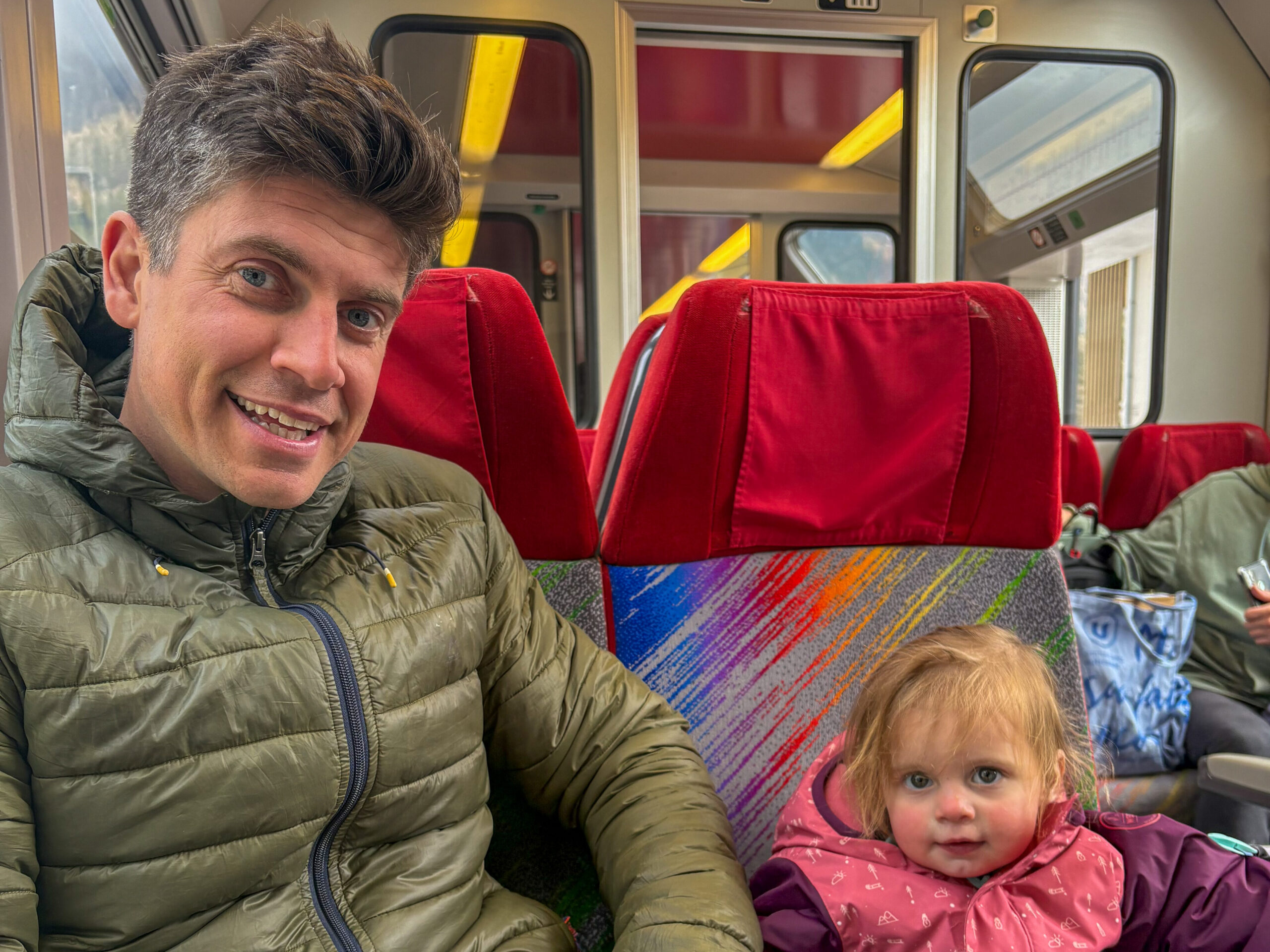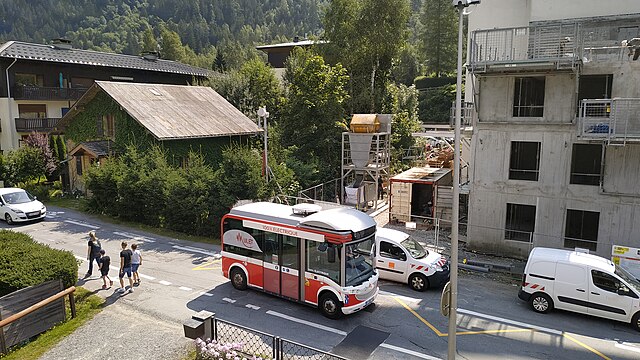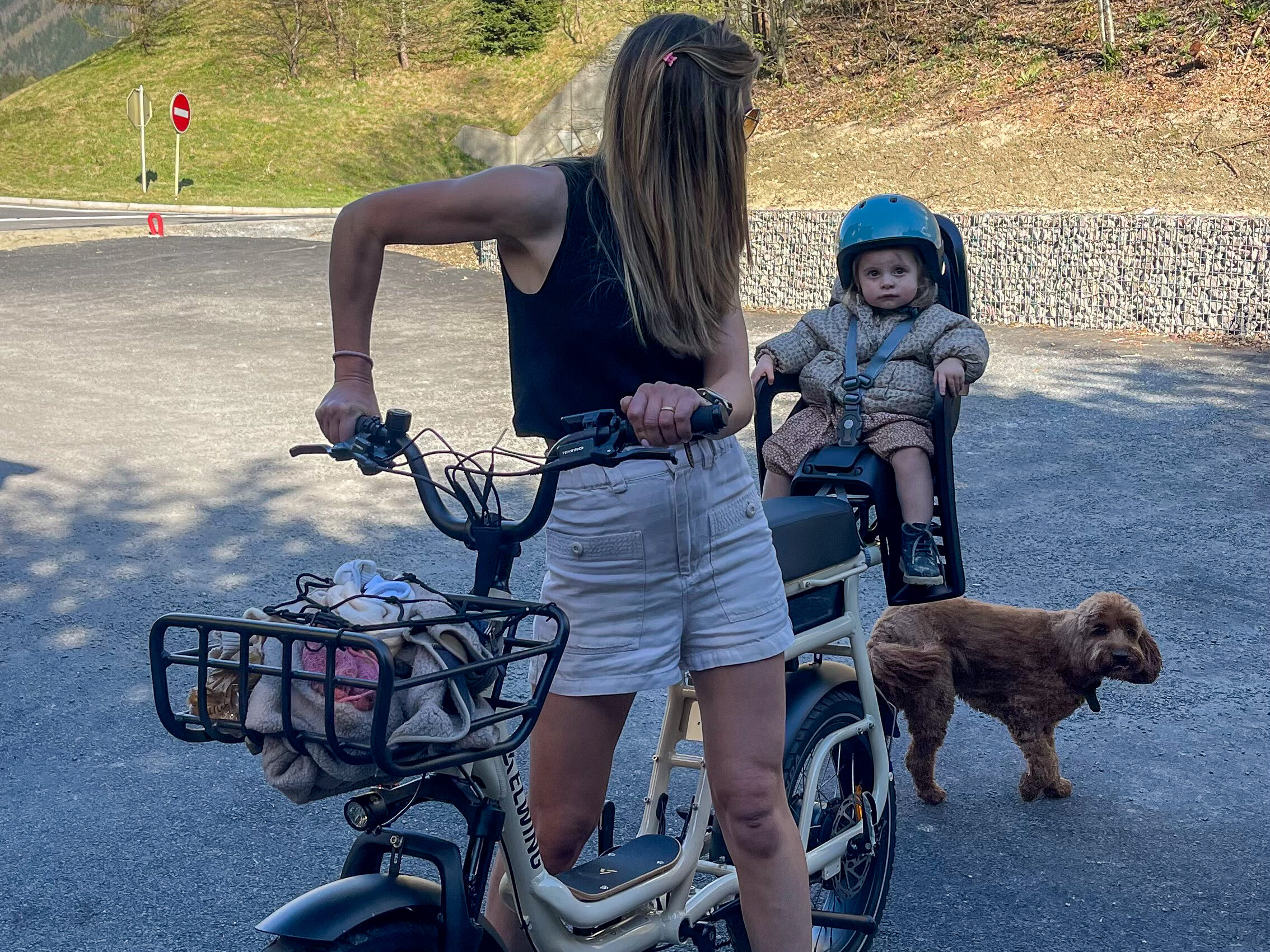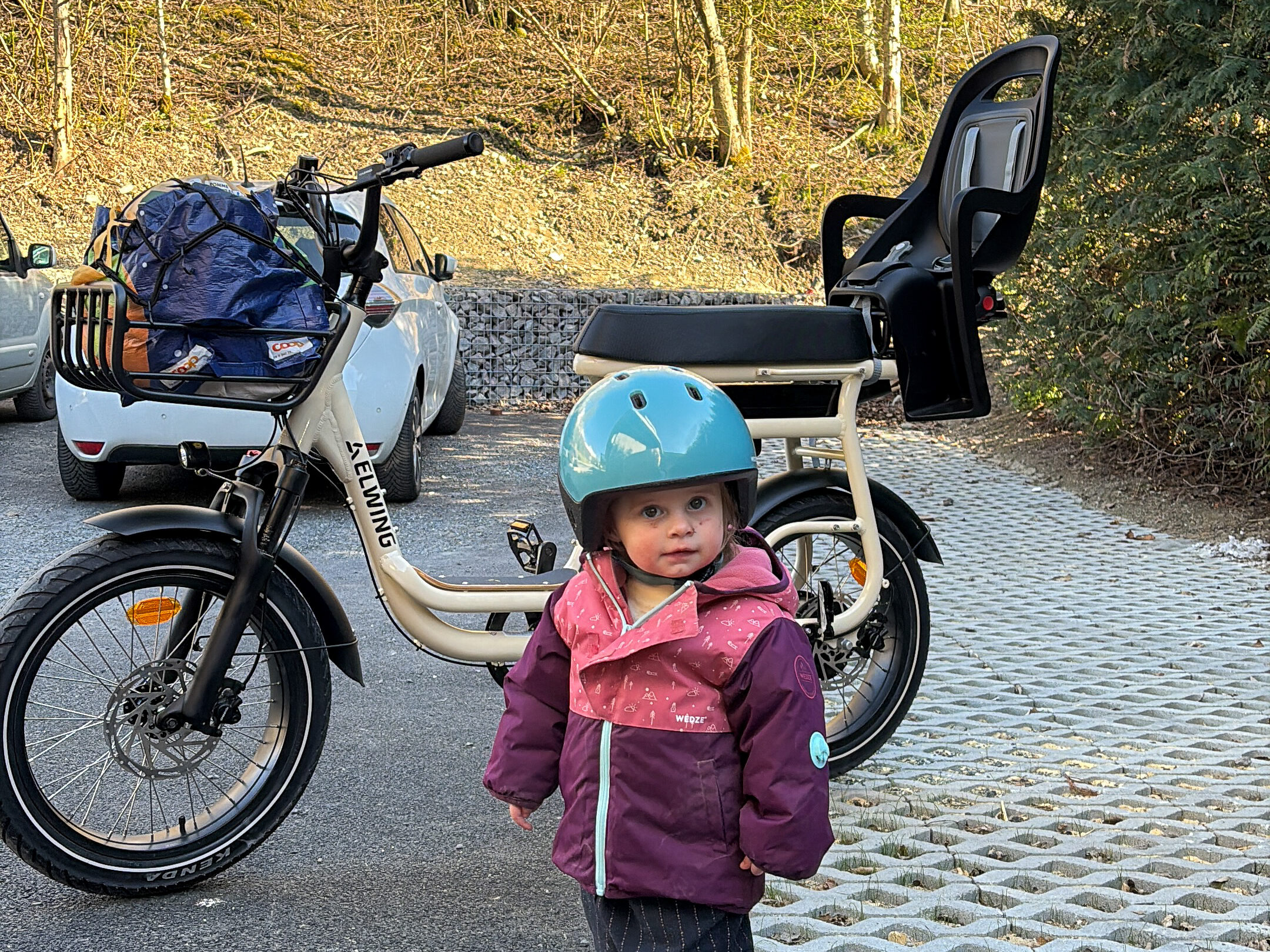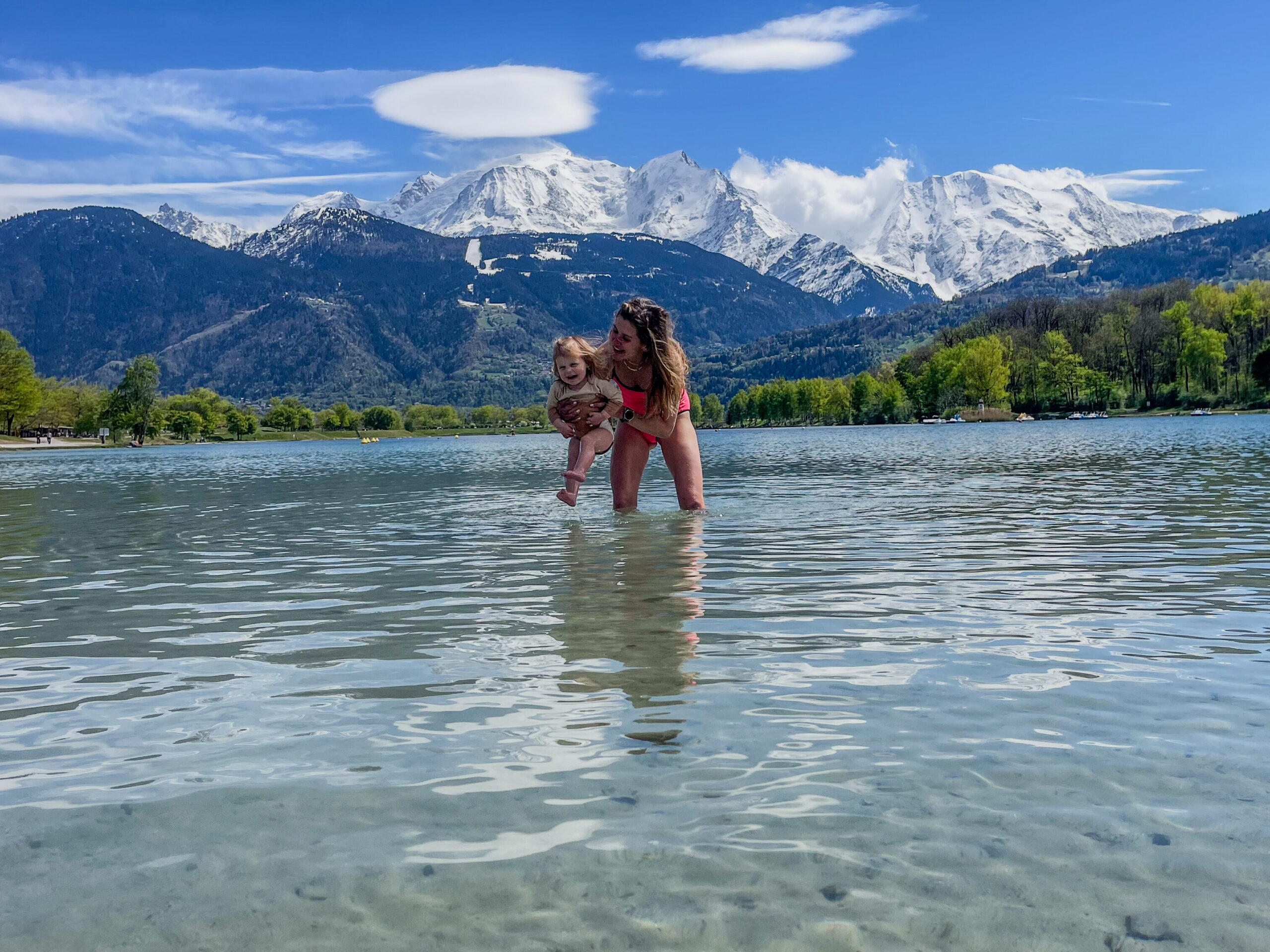
It’s the first week of May here in Chamonix, and the town is deep in its in-between season, that liminal moment between the last of the snow and the first big summer crowds. I’ll admit, when we first moved here I had no idea what to expect at this time of year. Would everything be shut? Would we be stuck indoors?
Since arriving, I’ve been navigating not just a new town, but also an injury. I’m currently dealing with a grade 4 pelvic fracture, which has meant no running or much adventuring for the past few months. It’s been a huge adjustment, especially living in a place so defined by movement and mountains. At the moment, I’m limited to getting around by car, public transport (see my earlier post on how to use the Chamonix buses and trains), and my trusted, though slightly too big for me, crutches.
But if anything, this slower pace has made me more tuned in to what is available. Now that we’ve settled into the rhythm of this quieter time in the valley, I’ve started to figure out what’s actually open, which spots are still serving up great coffee, and how to make the most of May in Chamonix. Whether you’re visiting, new to the area, or just feeling a bit stuck in this awkward in-between, here’s what I’ve discovered so far.
Lake Passy: Cold Water Therapy, Playgrounds and Peace
I’ve been frequenting Lake Passy’s calm waters since we first arrived in the valley. Back then, the temperature was perfect for practising cold water therapy, a routine I started in the UK to help manage my ADHD. It’s been one of the most effective treatments I’ve found. There’s something about stepping into that icy water, the way it forces you to focus on nothing but your breath. For someone who rarely slows down, it’s the perfect mix of challenge and calm. It resets me.
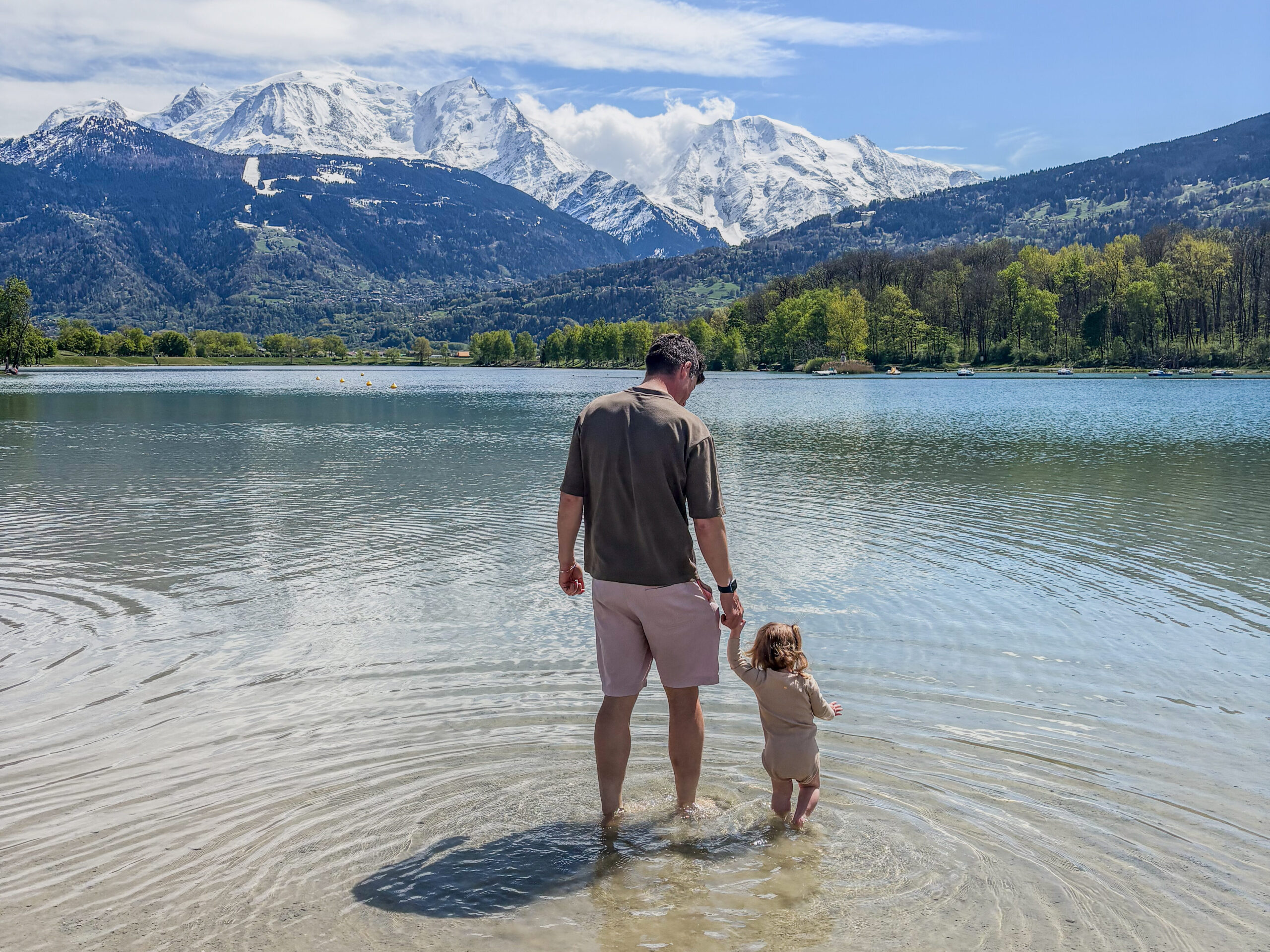
Since the weather warmed up and I started bringing my daughter down to the lake, we’ve been heading to the far end, the ‘beach’ side, and it’s absolutely beautiful. There’s a brilliant play area that’s great for little ones from about 16 months all the way up to age eight, plus safe, easy access to the water. Margot loves nothing more than a cold dip, and her tolerance for chilly water puts my husband to shame.
On weekends, we’ve been taking picnics and enjoying them on the grass while soaking in the buzz of activity. Most people seem to turn up with barbecues. We’ve been meaning to buy one for weeks, but like so many things on my list, that idea is still waiting to be actioned. Soon, I hope.
Evenings at the lake are equally magical. We recently parked up the campervan and joined some friends for a low-key dinner, al fresco dining without the charcoal, but just as lovely.
Bubbling Away at QC Terme Spa
I’ve now been to QC Terme twice: once on a sunny day, and once when it poured. If I had to choose, I’d go for the rainy day every time. There’s something about sitting in a steamy outdoor pool, light drizzle coming down, and Mont Blanc just visible through the clouds that feels both indulgent and oddly cinematic.
On arrival, you’re handed a wristband with your locker number and, if you’ve booked lunch, your slot for eating. The layout of the spa feels like a gentle maze. I tend to start in the ski sauna, which is warm but not overwhelming. It has a 15-minute sand timer, just long enough for the heat to slowly work its way in before it starts to tip into too much. And yes, there’s a cold-water bucket for that dramatic post-sauna splash, which is either refreshing or ridiculous depending on your mood.
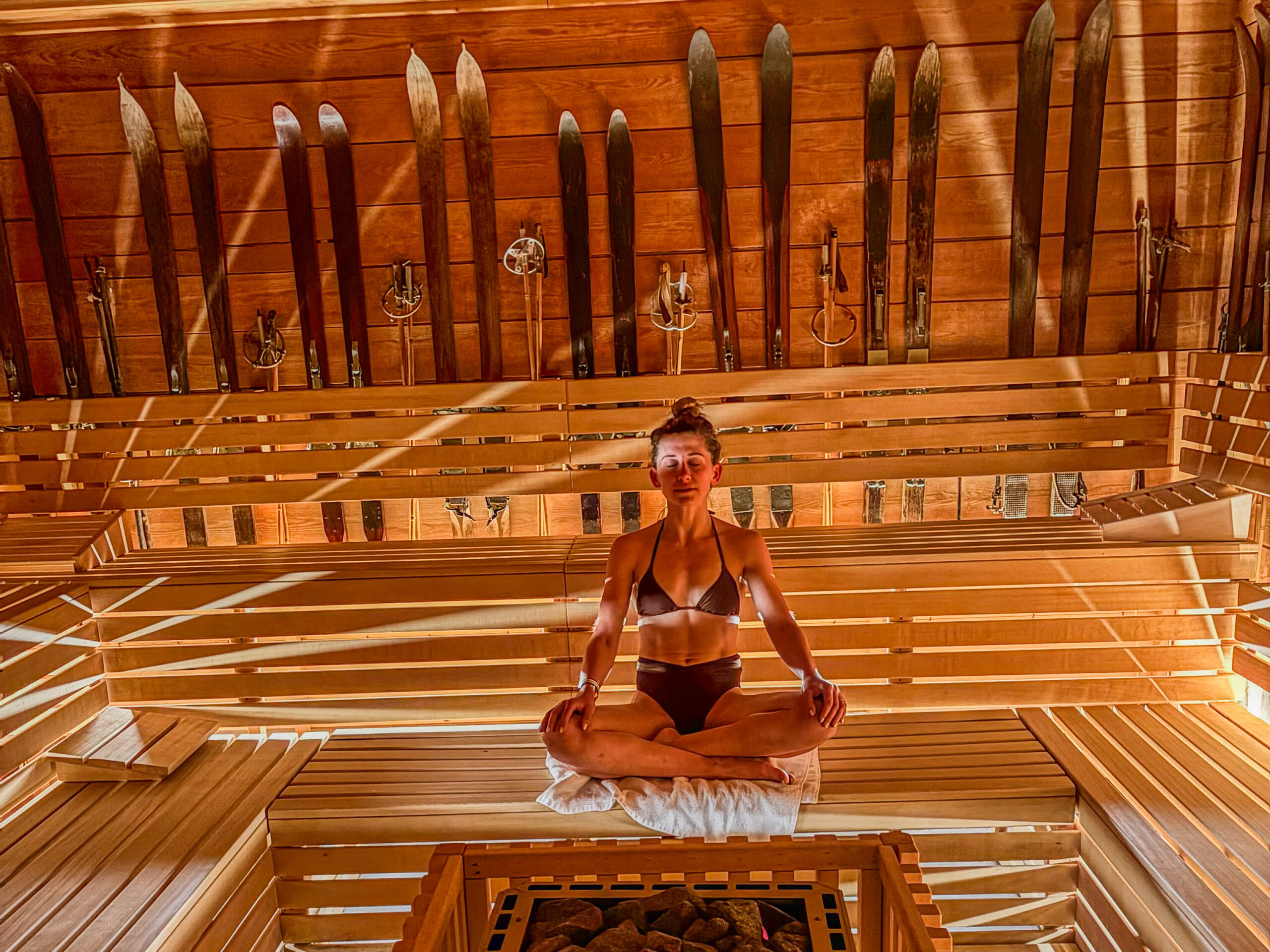
Next comes the steam room, and I mean it when I say steamy. Eyes-stinging, can’t-see-your-hand kind of steamy. A plunge pool nearby brings your heart rate back to something resembling normal, and from there it’s on to one of the four relaxation rooms. The hammocks are my favourite. Cocooned in your robe, swaying slightly, it’s the kind of stillness I rarely find elsewhere.
The main floor is the heart of it all: sensory water experiences that feel quietly theatrical. Think waterfalls in dark rooms, warm stone beds with droplets falling rhythmically on your back, alternating cold and hot foot baths, and hydropools with bubbles, jets, and just the right level of low-key buzz. The indoor-outdoor pool is the highlight. Sitting outside in warm, bubbling water with the mountains in front of you feels like a total pause from real life.
Upstairs is quieter. There’s a face gym, a few peaceful corners to rest in, and plenty of loungers if all you want to do is nap.
And then there’s lunch. Honestly, it’s a dream. A fine-dining style buffet with fresh salads, pasta dishes, seasonal veg, cheese, charcuterie, and a dangerously good dessert spread. You eat in your robe, sip herbal tea or a glass of wine, and for a blissful hour, the world feels very far away.
A day pass costs €84, which did make me wince slightly, but it gives you full access to the spa’s three floors. You can also add lunch for €42. It’s a treat, yes, but in my view, one worth making space for.
Parc de Merlet: Wildlife Watching with a View
Parc de Merlet is one of those places that locals always mention with a bit of a knowing smile, as if it’s a hidden gem but one they’re happy to share. Perched above Les Houches at around 1,500 metres, the park offers a chance to see some of the Alps’ most iconic animals, including ibex, chamois, marmots, mouflon, and even a few llamas and alpacas, roaming in a protected, open setting with staggering views of the Mont Blanc massif.
I haven’t made it up there yet, thanks to my current injury, but it’s firmly on our list for the coming weeks. From everything I’ve heard and scrolled through obsessively, it looks like a magical place for children and adults alike. The animals wander freely through alpine pastures, and it’s more of a mindful ramble than a full-on hike. Just being able to sit quietly and spot a marmot with the mountains in the background sounds like the sort of moment I’m craving right now.
There are two main trails through the park: one that’s easier underfoot and one with a bit more climbing, so depending on your mobility or the age of your kids, you can pick a route that suits the day. There’s also a restaurant with a panoramic terrace, which I am absolutely planning to visit, and space for a picnic if you’d rather bring your own lunch.
While I can’t vouch for it from first-hand experience just yet, everything about it seems like a breath of fresh air, quite literally.
Practical Info
Open Tuesday to Sunday from 1 May to 30 June, and 1 to 30 September, 10am to 6pm (closed Mondays).
Open daily from 1 July to 31 August, 9:30am to 7:30pm.
Tickets: €9 for adults, €6 for children (ages 4–15). Booking recommended on weekends and holidays.
Where to Cafe
When May rolls in, one of the big questions becomes: what’s still open? A few favourites close for a spring reset, but some gems stay open and continue to pour excellent coffee and serve even better food. These three are holding the fort beautifully.
Le Petit Social, Les Praz
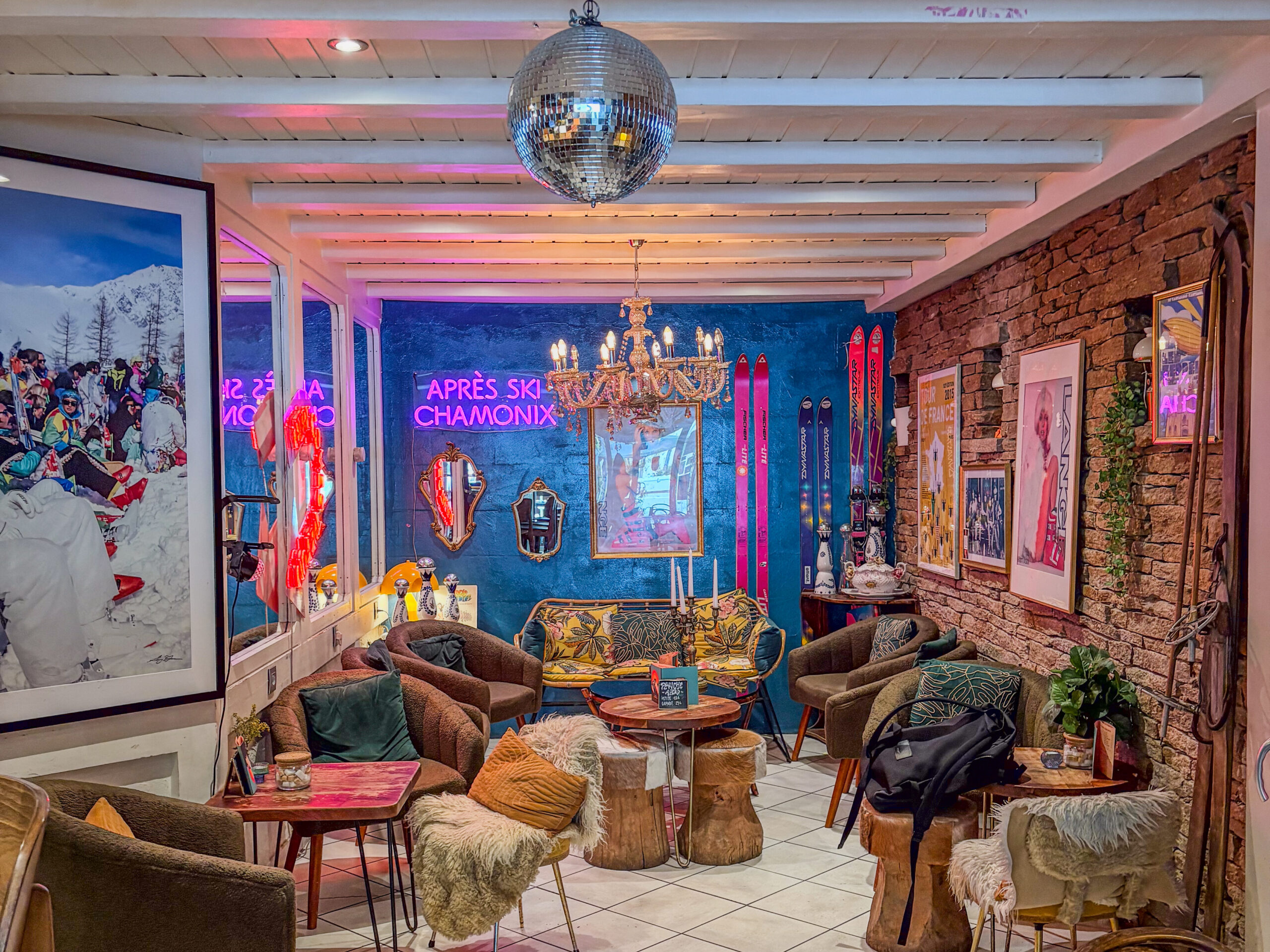
I’m actually sat in here while writing this, which probably says all you need to know. Tucked away in Les Praz, Le Petit Social is a retro, ski-themed café with a bit of funk. It blends laid-back café culture with après-ski energy and natural wine flair, depending on the time of day.
The brownies are the real reason I keep coming back—fudgy, generous, and hard to beat. Coffee is served with a little biscuit on the side, and the barista makes a perfectly balanced allongée.
I only just clocked that they do paninis too, so I’ll definitely be back for lunch. It’s the kind of spot you can turn up solo, with a laptop, or mid-ramble with friends and always feel welcome.
Bakery L’Al’Pain, Argentière
In my opinion, this is the best bakery in the Chamonix valley. It’s a 25-minute drive from town, and honestly, worth every mile. Since arriving, I’ve been on a quiet but determined mission to find the best Quiche Lorraine in the area, and this one is nothing short of elite. The case is so thin it’s barely there, which means the filling becomes the main event—deep, silky, and balanced. There’s just the right amount of lardons, more of a gentle scattering than a snowball fight, so you get all the flavour without chewing through chunks of meat.
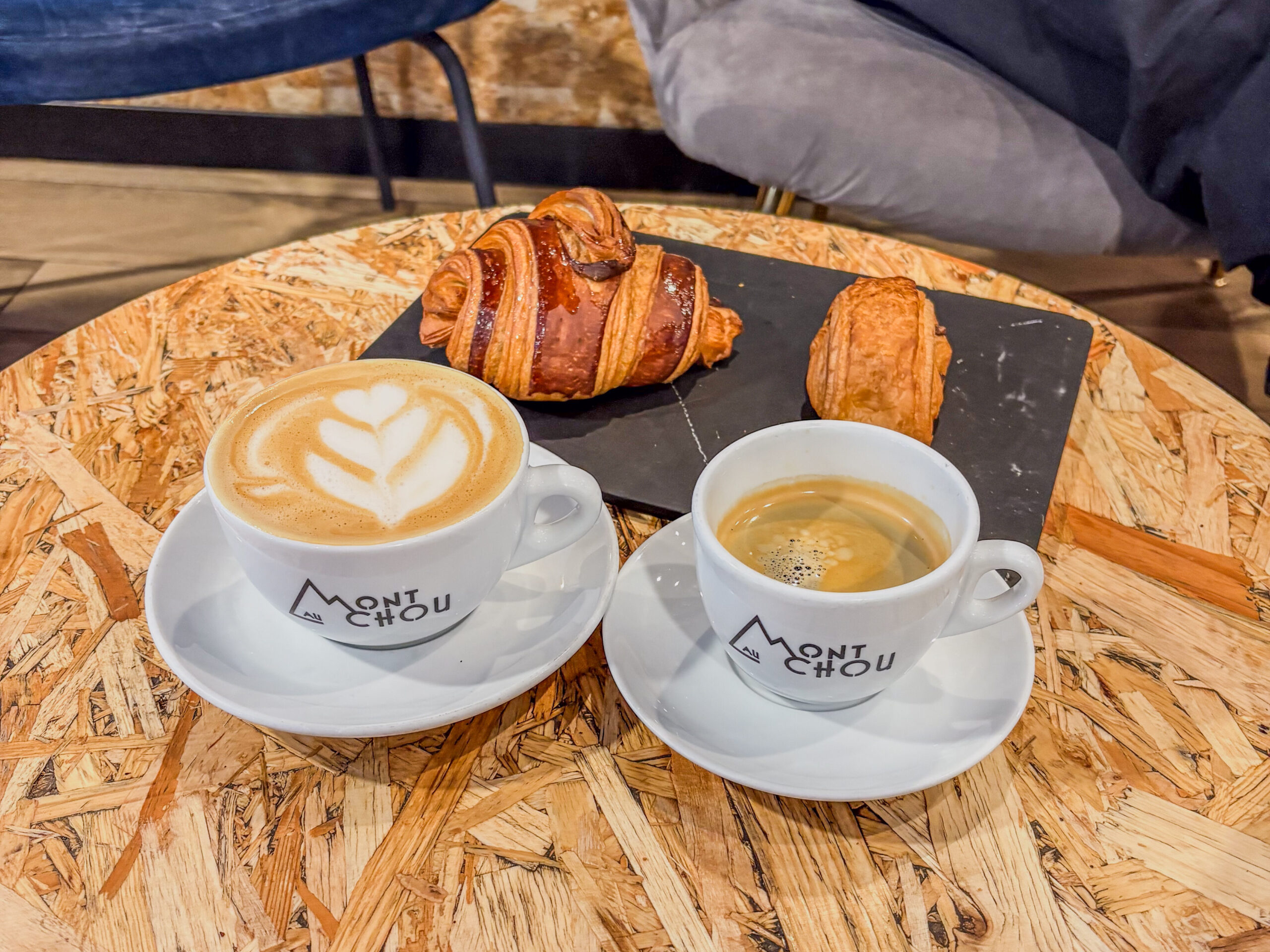
Their croissant selection is exceptional. Every flavour you can imagine, including mini versions, which is perfect if, like me, you want a little taste of something sweet but don’t want to detract from the savouries. I’ve also fallen hard for the tartiflette tartine. It deserves a place in the hall of fame for tartiflette-inspired foods.
The coffee isn’t the star of the show, but who really goes to a bakery just for the coffee? I don’t avoid it, I just wouldn’t make the trip for that alone. Thankfully, they clearly pour their energy into what matters most: the baked goods.
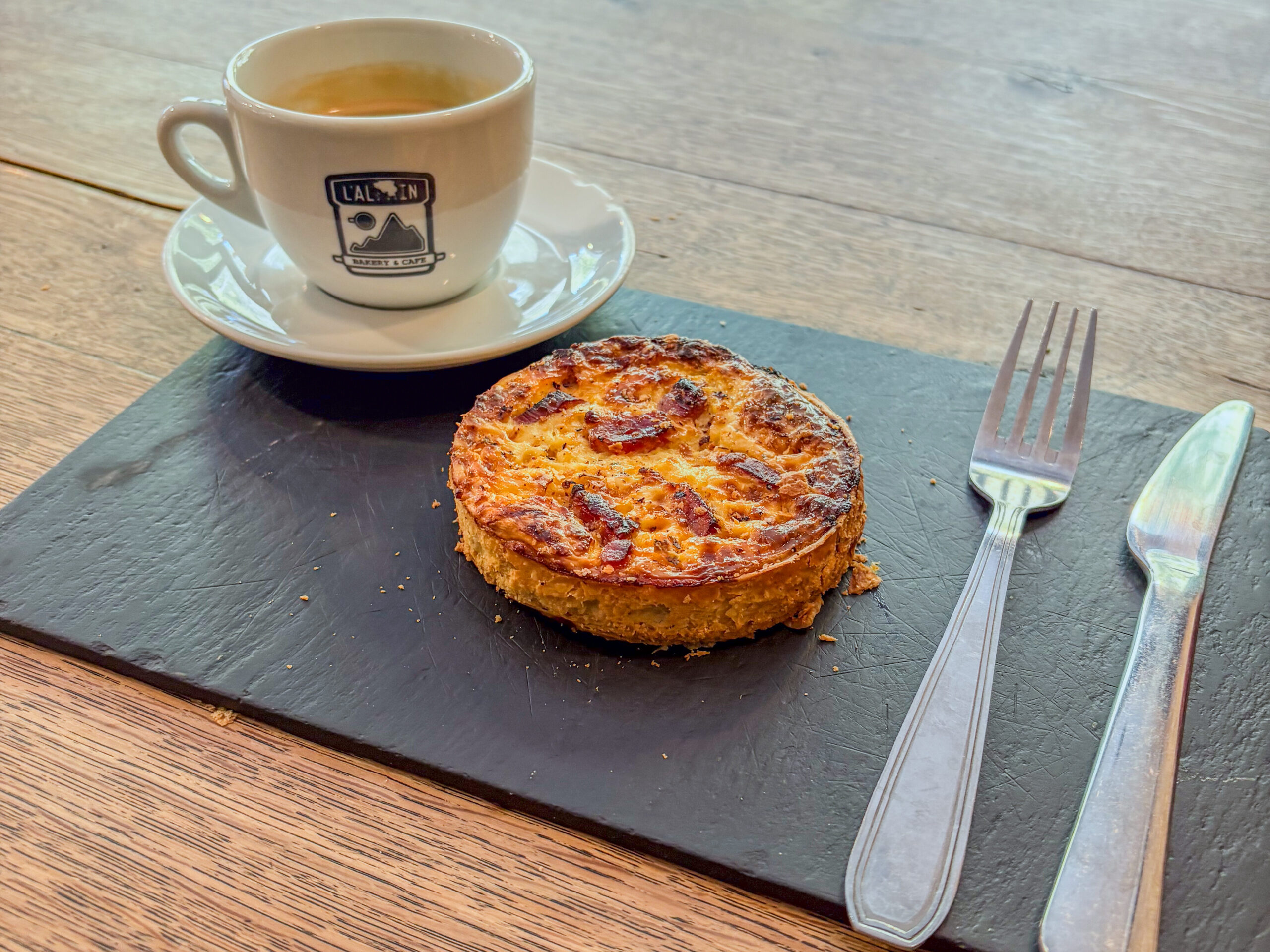
Parking is easy, with spaces just out front, and there’s a great park a five-minute walk away towards the Grands Montets lift.
Couloir, Chamonix Center
Couloir remains one of my all-time favourites for coffee, banana bread, and an easy, unfussy space to sit and watch the world go by. I’ve already written a full post on why I love it here, so I won’t repeat myself, except to say, they’re currently closed for three weeks and sorely missed. If you happen to be in town on 24 May, you’ll likely find me with my face pressed to the glass waiting for that first pour.
My thoughts (so far)
May might not be the Chamonix you see on postcards, but even in this first week, I can already see its quiet charm. The pace has slowed, the town feels softer, and it gives you space to notice things you might usually rush past. Whether you’re nursing an injury like I am, chasing a toddler, or simply enjoying the pause before the summer season, there’s something quite special about this moment in the valley. You just have to know where to look—and maybe bring a warm jumper.
